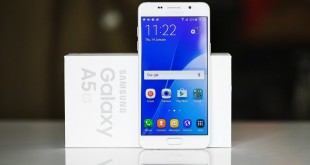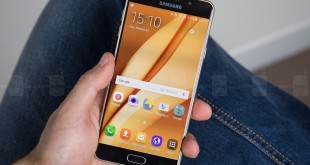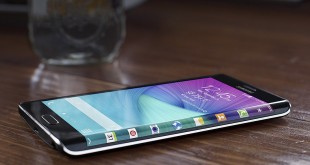Samsung Galaxy S7: Full Specifications
Samsung Galaxy S7 will have the most advanced specification and features. Let’s take a brief look on what are the specifications of Galaxy S7. Now both Galaxy S7 and Galaxy S7 Edge Smartphone are launched. Let’s check out complete specs of Samsung’s latest flagship.
| Model Name | Galaxy S7 |
| Display | 5.1 inch Display (1440 X 2560 Resolution) (Super AMOLED, Force Touch with TouchWIZ UI) |
| Processor | Octa Core Snapdragon 820, Exynos 8890, 64 bit Chipset |
| Dimensions | 142.4 X 69.6 X 7.9 mm, 152 grams |
| SIM | Nano SIM, Samsung Pay |
| Protection | Corning Gorilla Glass 5, IP68 Water & Dust Resistance |
| GPU | Adreno 530, Mali-T880 MP12 ~577 ppi pixel density |
| OS | Android v6.0 (Marshmallow OS) |
| RAM | 4 GB |
| Memory | 32 / 64 GB, Micro SD up to 200 GB |
| Camera | 12 MP f/1.7 primary camera, 26 mm 5 MP Front facing camera with Dual Video call |
| Networking | 2G, 3G, 4G LTE, HSPA, GSM support v4.2 Bluetooth, NFC, Wi-Fi, A-GPS, GLONASS |
| Sensors | Fingerprint, Retina Scanner, Auto HDR, Gyro, OIS, Accelerometer, Barometer, Proximity, Heart Rate etc. |
| Battery | 3000 mAh Non-Removable Battery |
| Colors | Black, Silver, Gold, White |
| Release date | March 11, 2016 |
Galaxy S review
The Galaxy S7 is actually two phones: the standard S7 ($650-$695, depending on carrier) and the S7 Edge ($750-$795, depending on carrier). It’s the Edge that truly tries to solve the big phone problem using Samsung’s unique curved display technology.
The S7 models aren’t hugely different from last year’s Galaxy S6 pair — in fact, they look almost identical. The Galaxy S6s were a watershed moment for Android devices: they were the first ones that could stand next to the iPhone in terms of design, materials, performance, and camera quality. So for the S7, Samsung didn’t rewrite its formula. Instead, it took what was good in the S6, refined and iterated upon it, and produced something much better.
And it fits in your pocket.
Between the two devices, the standard S7 is the less interesting model. It’s the most similar to last year’s phone: same size display (5.1-inch, quad HD, Super AMOLED), same materials (metal and glass, no plastic to be found here), same overall shape and design. It’s a little bit heavier and a little bit thicker than the S6, but not egregiously so in either category.
The S7 has adopted the Note 5’s curved glass back, which makes it more comfortable to hold, despite its thicker profile. The home button doesn’t stick out as much and the rear camera housing doesn’t protrude as much as before (again, likely because the phone itself is just over a millimeter thicker than the S6). It’s a more refined version of the S6, but overall, it’s largely the same hardware experience.
The S7 Edge, on the other hand, has undergone more dramatic changes. While last year’s S6 Edge has the same 5.1-inch display as the standard model, the S7 Edge steps up to a phablet-class 5.5-inch screen (also quad HD, Super AMOLED, and fantastic to look at). That does make it taller and wider than before, but not nearly as much as you might expect.
The secret to the S7 Edge is in those curved sides that give it the Edge name. Samsung’s been curving screens on its phones for a few years now, including on the S6 Edge and the larger S6 Edge+. But those felt more like a gimmick for marketing purposes than anything else.
The curved sides on the S7 Edge are different. Samsung’s using them here to make the phone much narrower than it would be if it had a flat display. It makes the whole device smaller and easier to use. That becomes readily apparent when you put the S7 Edge next to other devices with 5.5-inch or similar screens. It’s significantly narrower than all of them, including Apple’s iPhone 6S Plus (5.5-inch), the LG G4 (5.5-inch), Google’s Nexus 6P (5.7-inch), and Samsung’s own Note 5 (5.7-inch). When it comes to ease of use in your hand, a narrower phone is much easier to manage.
The S7 Edge also has curved glass on its back, which makes it much more comfortable to hold and easier to pick up off a desk or table than last year’s S6 Edge. The whole thing is rounded and polished and delightful to flip over and over in my hand, much like a river stone that’s been tumbled under water for a millennia or two. It slips into my pants pocket with ease and is just short enough so that it can stay in my pocket when I sit down. That’s something I can’t say about the iPhone 6S Plus, Nexus 6P, or Note 5.
On top of this, Samsung managed to make both S7 models water resistant. They can withstand up to 30 minutes under a meter and a half of water, but really the important thing here is that it you don’t have to worry about the being a fallible human being around your phone. The tiny tragedies of day-to-day life become no big deal: spilling your coffee when your phone is on your desk, keeping it by the sink when you’re doing dishes, calling an Uber in a rainstorm, or, worse, dropping it in the toilet when you’re a few sheets to the wind. The S7s don’t have any fiddly flaps or port covers to accomplish this, either. Samsung isn’t the first phone company to make a water resistant phone, nor are the S7s Samsung’s first water resistant models, but it’s something that all phones, especially high-end ones, should have on their spec lists1.
The S7 Edge is the most impressive piece of smartphone hardware I’ve ever held
The sum of all of this means that the S7, and more specifically, the S7 Edge, is the most impressive piece of smartphone hardware I’ve ever held. It’s so polished, so well put together, so smartly designed, and so beautiful to look at that it’s a joy to pick up over and over again. That’s aided by the new colors Samsung is using this year: the silver and gold are a little boring, but the black is gorgeous and refined, deep and inky with just the right amount of reflectivity. It seems silly to be excited about a black phone, but since so many are various shades of grey and not actually black anymore, it’s a refreshing change of pace. (Also, it’s just a really good black.) My only real complaint is the glass on both phones is like a rare earth magnet for fingerprints, and it makes them slippery, especially in cold weather when my skin is dry.

Of course, you can’t stop with the exterior design and hardware if you’re going to make a truly competitive and exceptional device, and Samsung’s upgraded everything inside the S7s too. Its new processor (Qualcomm in the US, which is what I tested; other markets will have a Samsung Exynos chip) is paired with 4GB of RAM, and it has no trouble multitasking, gaming, playing video, or any other task I attempted with it. It’s a fast and responsive phone that was ready for anything I needed it to do. And it’s encrypted by default, something that has slowed down other phones in the past. The only performance quibble I have is with the speed of the fingerprint scanner in the home button. It’s reliable and fast enough to not be annoying, but it’s not as lightning-quick as the scanners on the iPhone 6S or Nexus 5X and 6P.
The brute force method is still the best way to address battery life in smartphones
The battery life improvements in both S7 models are more noticeable — and appreciated. The S6’s fatal flaw was a non-removable battery that provided inconsistent results and frankly, couldn’t last an entire day for most people, myself included. To address this, Samsung used the brute force method: it just jammed much larger batteries into the S7 models. The standard S7 has a 3,000mAh cell (17.6 percent larger), while the S7 Edge has a whopping 3,600mAh (38.5 percent larger) battery2.
The bigger batteries (combined with Android’s efficiency improvements in Marshmallow) mean the S7 and S7 Edge had no trouble lasting through a full day in our tests. If you’re a power user and really concerned about battery life, the S7 Edge is obviously the way to go3, but both phones have support for fast charging and Samsung’s fast wireless charging, which makes it easy to top up when you need to.
Samsung also added MicroSD card support to the S7, which it says was in direct response to customer requests. Since 32GB is the only capacity most people will be able to buy the S7 in, the ability to pop in an SD card up to 200GB in capacity is appreciated.
The camera is another hugely important aspect of a modern smartphone, and the new one on the Galaxy S7 is a home run. Samsung built upon last year’s already excellent camera and made it faster, in both time it takes to launch and time it takes to autofocus, producing one of the most impressive smartphone cameras I’ve ever used.
The S7’s camera is actually lower resolution than the S6’s, but it has physically larger pixels and a brighter lens, so the loss in resolution is made up for by better low-light performance. It still has optical image stabilization and can record 4K video. The S7’s camera produces bright, sharp, detailed images again and again, and I didn’t hesitate for a second to rely on the S7’s camera when I needed to.
Part of this is the new dual-pixel autofocus technology Samsung is using, which the company says is the same kind of technology found in some DSLR cameras. Each pixel on the S7’s sensor acts as an autofocus point, so the camera is able to quickly focus on a subject and adjust as that subject moves. The effect is most noticeable when shooting video and the camera has to rack focus between two points.
Shots in bright and low light look great, though they can still be too warm
The camera performs well in both bright situations and low-light, though it still tends to produce overly warm or yellow images when the light levels drop. And though it’s not noticeable most of the time, there is a bit too much sharpening applied to images, which becomes apparent when you zoom in after the fact.

Samsung’s camera app is one of the best available for Android, and it has both simple automatic modes and more advanced manual controls (the S7 can also capture RAW images, if you want). The S7 also tends to overexpose images, so I found myself using the camera’s exposure compensation tool to adjust for it fairly regularly.A new feature in the camera app is called Motion photo, and yes, it’s very similar to Apple’s Live Photos. Samsung’s version captures a short video clip of a few seconds before the image is captured, but it doesn’t record anything after the fact and it doesn’t record any audio. It’s also not possible to share or download the video clips to your computer, which makes them fairly useless. Samsung says the idea behind Motion photos is to capture moments you may have missed before the shutter snapped. It is possible to grab still frames from the Motion photo video and share those.
Overall, the S7’s camera isn’t a huge leap forward from the S6’s camera, but that’s largely because the S6’s camera was already very good. The most noticeable improvement is with the speed in launching (using the brilliant double-press on the home button feature) and speed in autofocus. In side-by-side tests, the S7’s camera produced brighter, sharper images than the iPhone 6S Plus, and it was faster to autofocus, especially in poor lighting.
For selfies, the S7’s 5-megapixel front camera takes much sharper and more detailed images than the iPhone’s front camera, and it has a brighter and wider lens for group selfies.

While Samsung has been able to figure out how to make great hardware in the past couple of years, it has struggled more with software, and the S7’s software is easily its weakest point. The phones run Android 6.0 Marshmallow with Samsung’s customized TouchWiz interface on top. TouchWiz has been improved — it gets slightly better looking each year — but I still find it less attractive and cartoony compared to Google’s own take on Android. Fortunately, you can easily theme it to look more Nexus-like if you want.
Carrier bloatware almost ruins what is otherwise a great phone
Samsung says it worked with Google to reduce the number of redundant apps it adds to Google’s own suite, and the Verizon S7 I tested comes with only one browser (Chrome) out of the box (other carrier models will have both Chrome and Samsung’s browser). But it still has two email apps, two photos apps, three music players, two voice control systems, two app stores, and two text messaging apps. On top of that, Verizon adds thirteen more apps, including three from Amazon, another text messaging app, another streaming music app, and a navigation app that competes directly with Google Maps. These apps can be “disabled”, but cannot be removed entirely.
It’s very likely that the other carrier models are similar (AT&T even advertises that the S7 comes loaded up with DirecTV apps you probably don’t want). It’d be really great if Samsung stood up to carriers and stopped them from loading up otherwise great phones with a bunch of useless apps, but the company has a lot of work left to do here6.
There are two new software features this year and an improvement on the Edge screen feature introduced last year. Available only on the S7 Edge, the Edge screen lets you swipe in from the side to quickly access contacts shortcuts, apps, weather, sport scores, news, and more, including a ruler and compass. The panel is twice as wide as before, allowing it to display more content. But I still found it to be mostly a gimmick and turned it off after a few days. The other thing that Samsung needs to work on is detecting errant touches on the sides of the S7 Edge — far too often the inside of my palm would touch the sides of the display when I was holding it and confuse the phone.
Both phones have a new always on display mode, which can show time, date, battery life, an image, or a calendar at all times, without having to wake the phone up. The always on display also shows icons for missed calls or messages, provided you use Samsung’s native apps, but it doesn’t show any other notifications. It’s also not interactive — you can’t double-tap the screen to wake it up fully, nor can you act on any of those notification badges directly from the always on mode. It’s convenient to be able to see the time and date without having to touch the phone, but overall I don’t find it as useful as similar features on Motorola or Google phones.
The new software features aren’t very useful
The other big new software feature is the Game Launcher, which arranges all of your games in one place and lets you disable notifications, record gameplay, and enable power-saving modes while playing games7. As a casual gamer that plays Alto’s Adventure during my commute, I didn’t find any of the Game Launcher features compelling, though heavier gamers might appreciate them.

Perhaps it shouldn’t come as a surprise that the company that popularized the phablet is the one that’s pushing forward and working to make the best large-screened smartphone you can get. Big-screened phones are awesome, they are even more awesome when you can easily put them in your pocket and handle them in one hand without finger gymnastics.
A year ago, Samsung proved that it was possible to produce a powerful, capable Android phone with a great camera, beautiful design, and premium materials. This year, it proved that you can have a big screen in a phone that isn’t absurdly large.
The S7 and S7 Edge aren’t perfect — the software still lags behind the hardware — but they get the basics right: great screens, great cameras, great performance, and reliable battery life. They also have eye-catching designs and premium materials — the level of polish on these devices is unmatched in the rest of the Android world.
A level of polish unmatched in the rest of the Android world
The S7 Edge is the clear standout between the two models (it’s also the one Samsung will be pushing the most in its advertising). While the standard S7 is an excellent device in its own right, the Edge is the one that advances forward in design and usability, and tackles one of the biggest complaints with modern smartphones head on.
The result is that the S7 Edge is easily one of the best phones I’ve ever used, and probably the best Android phone you can buy right now.
Photography by: James Bareham and Amelia Krales
Video by: Tom Connors and Mark Linsangan
Author: Dan Seifert
Source: The Verge
 Oval Useful news from Azerbaijan and Caucasus
Oval Useful news from Azerbaijan and Caucasus


